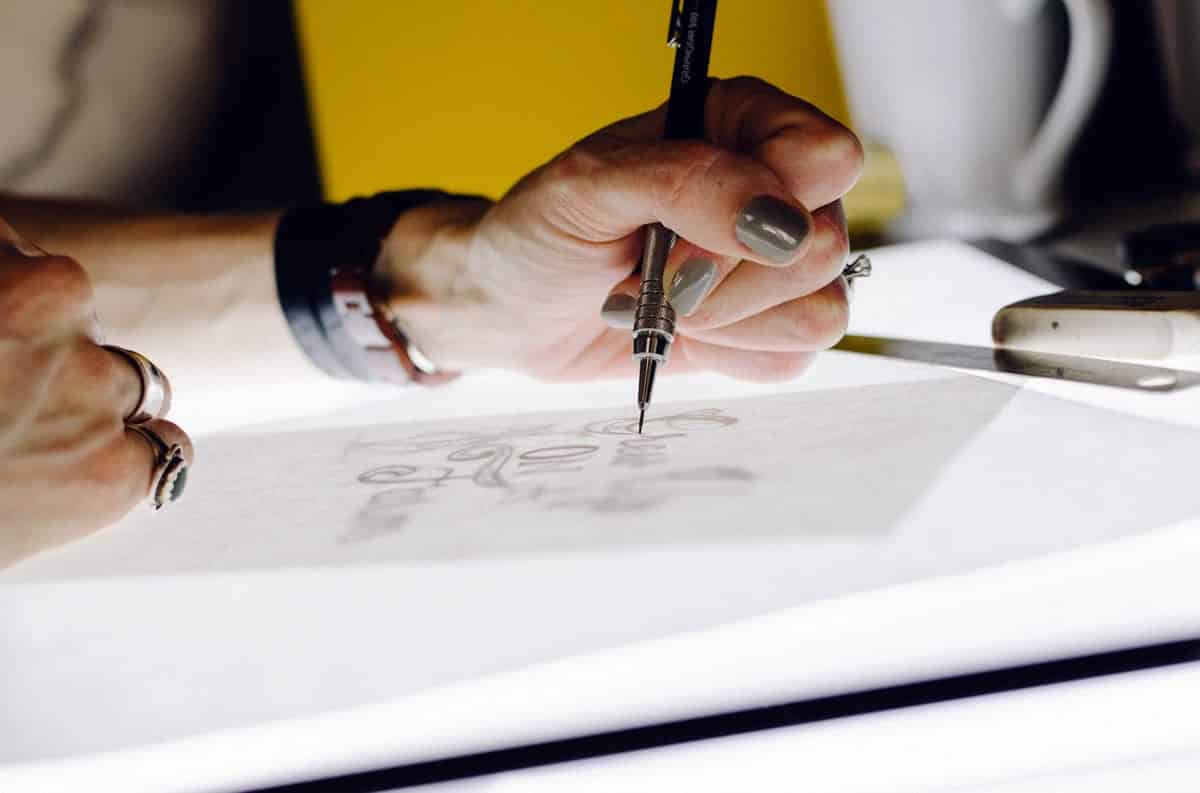Solid communication keeps teams moving, whether you’re in a tiny startup or have grown a company into an international firm. One concept that has been coming up often in my work is the need for team alignment, especially in the relationship between copywriters and designers. When it comes to product design, the way you convey your message in terms of the words you use and the way you present them visually have a significant impact on the success of that product.
Designers and copywriters need a strong relationship to produce the best possible work. Any friction between these two teams means that there will be increased back and forth, which will push delivery dates further out. Copywriters need to understand what designers do, why they do it, and how they approach creative challenges. The inverse is also true; when designers know how copywriters think, they can address their needs and concerns while working towards a shared goal. Both job functions use unique language to approach their work, but developing a common language helps boost team alignment.
Design thinking has expanded much further than the design realm lately. Cross-functional teams that want to become more agile and boost alignment are starting to realize the benefits, and are seeing real results. One concept that has been taking teams by storm is that when everyone puts design first, products function more smoothly. Design is a way of thought that can be ingrained in any department, even if they’re selling the product instead of creating it. Improving team alignment is always worth the time and effort. In this article, we’ll discuss how to get your team on the same page and why it matters in the first place.
Is Your Team Communication Up to Par?
Improving the relationship between copywriters and designers means that your users will have a more intuitive product to use. Words explain how to navigate and accomplish goals within products and design pulls those words together to streamline the process. When copywriters understand the importance of design and designers understand the importance of word choice, both can integrate this crucial knowledge into their joint projects. After all, a sleek sign up flow with copy that confuses the user will lead to abandonment, instead of completion. That’s why getting on the same page is a requirement to create innovative and successful products.
Going back to where we started, communication makes team alignment possible. You might have weekly or monthly check-ins with teams that are crucial to product development, but are these meetings as effective as they could be? Designers and copywriters need to be aligned day in and day out, and especially at crucial parts of shared projects. Otherwise, they run the risk of wasting time and delaying progress. Having siloed teams working on different facets of the same project leads to friction. While no one wants to add more meetings to their day, simply passing off work from one team to the next creates inefficiencies. Any business owner wants to streamline processes and deliver on goals faster, and this is possible when team alignment is strong.
This could take the form of a daily check-in where everyone updates the team on what they’re working on and where input from others could take it to the next level. Making room for collaboration and experimentation leads to a more connected team and a better product. The way your company has always done things is not necessarily the best way out there. Instead, try out new copy and design to see how customers respond to it. Constantly iterate in order to chase new levels of success.
What Comes First: Content or Design?
This looks like a tough question to answer, but it’s possible with the help of team alignment. Copywriters and product designers must discuss in depth what the goal of each feature is in order to cater to users and customers properly. When the entire team is clear on what they want customers to be able to accomplish and how they want to convey it, copywriters and designers can brainstorm and execute within shared boundaries.
However, there are also many instances in which design should come first. For example, if you’re developing a new app, you may create a wireframe first. The next logical step is to create a prototype, then decide on the copy. When your team understands the flow of the project and where their skills will come into play, it is much easier to move forward as a cohesive unit.
What is Good Design and How Can Team Alignment Make it Better?
“Good design” has many different definitions based on industry, location, preferences, and more. But what holds true is that good design goes far beyond what something looks like. Excellent form without excellent function to match is useless in such a competitive market.
We can all think of examples of products or apps that leave much to be desired design-wise, yet they work perfectly, so we continue using them. Good design has started to become a requirement for new apps and products. If a new public transportation app launched and looked like it was made for iOS 6, we would all be confused. Creating new products and launching updates often means checking in with current design trends in order to meet the needs and expectations of your market. Operating outside of design trends to forge your own path can be another worthwhile route, but it will take much more planning and a tightly aligned team to pull it off.
In essence, good design boils down to a product that meets customer needs and encourages them to return. Creating products with good design requires team alignment between several departments, and this is especially true when it comes to designers and copywriters. Good design speaks for itself, but when it has clear and genuinely helpful content to go along with it, there’s no cap on the success the product could reach.
Take a Step Back to Test
Writing and designing can be emotional work. You’ve poured countless hours into getting the look and feel right, but do your customers agree? It’s important to periodically step away from the drawing board to fully understand the impact of your work. Does a button have confusing text or is it in a location where users often forget to look? If engagement or traffic seems to be dropping off on a certain page or other part of your product, it’s time to make tweaks to learn what is causing it.
Customer preferences change over time, so being flexible and not being married to a specific layout or word choice will lead to a more optimized product over time. Let the data speak for itself and conduct user research as well to gain an understanding of the qualitative side of things. This way, you can improve team alignment on what customers really want and provide it consistently.
There is a common goal across copywriting and design: to provide a positive user experience that drives sales, engagement, downloads, etc. Since everyone is working towards this, egos must be pushed to the side to address when this goal is not being met and exactly where the team can align to improve it.
Data is also crucial when features are working seamlessly. Learning what factors are driving that success can help designers implement specific changes to other pages that will help them have a bigger impact. Awareness between copywriters and designers goes beyond producing the best products, and also extends to improving them over time as well. Both teams need to talk out what is going well, what isn’t, and how they can work together to have a bigger impact.
How Copywriters and Designs Can Align
Copywriters and designers have much more in common than meets the eye. In creating a great user experience, they must both follow the same principle: KISS, or “keep it simple, stupid.” As we sit in the midst of a minimal design revolution, the same can be said about copy: less is more. Copy and design must complement one another in this way. Words tell stories and design should echo it to put forth a cohesive message.
While we’ve primarily discussed how to improve team alignment between copywriters and designers here, this framework can also be translated to other areas of your workforce. Increasing awareness of what others do and how to work together more effectively is key to delivering exactly what customers want.
How do you foster an environment that leads to team alignment? Let us know what has worked for you by tweeting us @Protoio!
Proto.io lets anyone build mobile app prototypes that feel real. No coding or design skills required. Bring your ideas to life quickly! Sign up for a free 15-day trial of Proto.io today and get started on your next mobile app design.









